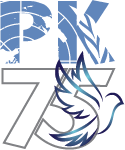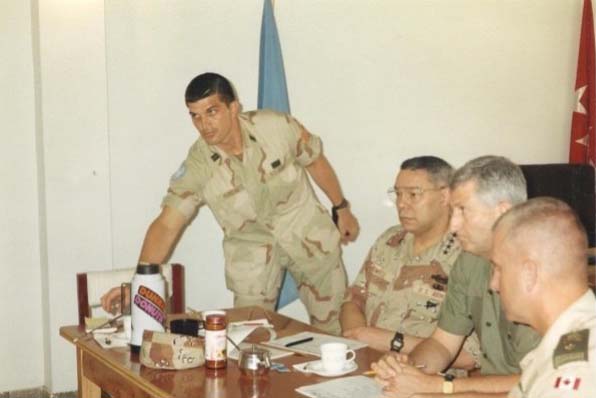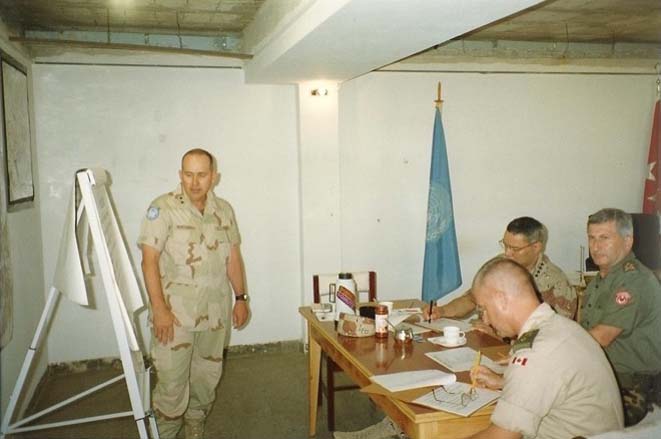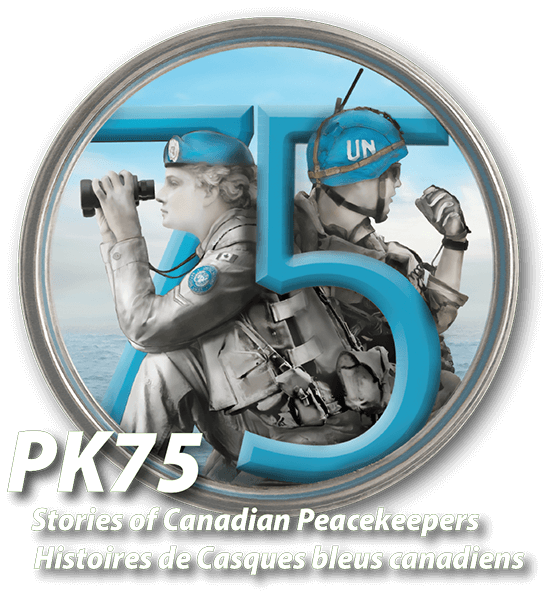

In June 1993 I was a recently promoted Brigadier-General serving as the Chief of Staff of the United Nations Operation in Somalia (UNOSOM II). I had served in that role during UNOSOM I, as a Colonel, beginning September 1992. UNOSOM I ended when U.S. Marines, of the U.S.-led Unified Task Force (UNITAF), came ashore in the early morning of 9 December 1992. I spent the first few months of 1993 doing transition planning in Mogadishu and at United Nations Headquarters in New York (UNNY), for the eventual hand-over from UNITAF. On 4 May, UNOSOM II was established in Mogadishu, the capital of Somalia, with a Turkish Lieutenant General as Force Commander, a U.S. Army Major General as Deputy Commander, me as Chief of Staff, and a 28,000 strong international military force authorized to operate under Chapter 7 of the United Nations Charter. Our mission was to establish a secure environment throughout Somalia.
Planning for UNOSOM II military operations attracted some serious attention from troop contributing countries, as evidenced in a visit by General Colin Powell, then Chairman of the U.S. Combined Joint Chiefs of Staff, in April 1993.
The following anecdote is taken from a situation report I sent to National Defence Headquarters (NDHQ) on 6 June 1993.
There were two major incidents on 5 June 1993. Early that morning, a platoon of Pakistani soldiers (1 officer and 19 soldiers) was assisting in the distribution of food to hungry Somalis at a well-established city feeding point in Mogadishu. This platoon had routinely provided such assistance at this location on previous occasions, as was readily known by local inhabitants.
On this particular morning, the young platoon officer’s attention was diverted by two or three Somali males who appeared agitated for some reason. As the officer and some of his troops turned their attention to these men, the crowd closed in around the troops. The officer’s radio was snatched from his hands by someone in the crowd and he was shot at close range. He fell and the crowd set upon him with knives and clubs hidden in their clothing. The officer’s body was stabbed, hacked and largely dismembered.
Nearby soldiers were similarly overwhelmed so fast they were unable to open fire in self-defence. Eleven more soldiers were killed in short order, being stabbed by knives, beaten with clubs or hacked with machetes. Most bodies were grossly mutilated and left in the street. None died a simple death. Eight soldiers were taken away, seven of whom were recovered by the end of the day. One remained missing.
The attack on the Pakistani platoon was thought to be retaliation for a larger UNOSOM II operation conducted earlier that morning when UNOSOM troops forcibly entered a compound, controlled by one of the larger, more belligerent clans, to inspect weapons stocks stored in that location. Subsequently, there had been sporadic shooting across eastern Mogadishu that morning, that built up as the day went on. Two U.S. Army truck drivers had been wounded, but Pakistani forces bore the brunt of the attacks. Near the city outskirts, Pakistani and American troops, supported by attack helicopters fought an hours-long skirmish to clear a Somali clan strongpoint. U.S. attack helicopters also destroyed Somali artillery spotted 15 kilometres west of the city. By the end of the day 24 Pakistani troops had been killed and another 44 wounded. U.S. Forces suffered three wounded. Somali dead and wounded were difficult to calculate, but reasonable estimates place Somali KIA (killed in action) at about 60, with over two hundred wounded.
On 6 June, UN staff were brought into the UNOSOM II Force Headquarters compound for added security. Militarily, UNOSOM troops increased patrolling throughout Mogadishu and the UNOSOM military staff continued to plan further offensive action against the more troublesome clans. The situation did not get any easier. In the months to come, UNOSOM troops, supported by substantial capabilities of the U.S. conventional forces, engaged the more belligerent Somali clans in more complex attacks.
By the time I deployed home to Canada in July, UNOSOM had executed three such operations against clan weapons storage sites. More of these attacks would come over the summer and early fall of 1993. Some were successful. Some were not. The last one, in October, became the basis of a book and a blockbuster movie — Blackhawk Down.
Biography
Brigadier-General Dr. James (Jim) S. Cox (Retired) completed a 35-year military career, mainly in operational command and staff positions across Canada and on four continents. He last served as Deputy Chief of Staff Intelligence at Supreme Headquarters Allied Powers Europe (SHAPE) in Mons, Belgium, from 1998–2001.
Along the way Jim completed three operational tours of duty with the United Nations in Cyprus (1967–1968, 1981, 1986), one in Central Africa (1997), two (consecutive) in Somalia (1992–1993), and three operational NATO missions in Europe, with the British Army of the Rhine (1972–1974), the ACE Mobile Force (1979–1980), and in SHAPE (1998–2001) including the 1999 bombing of Serbia and occupation of Kosovo. He trained with the United States Army, The United States Army Green Berets, The United States Marine Corps, the British Army, the British Army Special Air Service and the British Royal Marines.
Jim has commanded at all levels in the field army. He commanded Duke’s Company, 1st Battalion, The Royal Canadian Regiment (The RCR, 1978–1979), 3rd Battalion, The RCR (1985–1987), and 1 Canadian Mechanized Brigade Group (1 CMBG 1993–1995). He also served as Deputy Commander of the Canadian Airborne Regiment in Cyprus (1981), and Deputy Commander of the Special Service Force (1991–1992).
After retiring from the Canadian Forces, Jim was an analyst in the Library of Parliament, from 2005–2011, supporting the House of Commons Special Committee on the Canadian Mission in Afghanistan, the House of Commons Standing Committees on National Defence and Veterans Affairs, the Standing Senate Committee on National Security and Defence, the Senate Subcommittee on Veterans Affairs and the Canadian delegation to the NATO Parliamentary Assembly. He also served as the Vice-President Academic Affairs with the Canadian Military Intelligence Association from 2012–2015.
In 1993, Jim was awarded the Order of Military Merit in the grade of Officer, by the Governor General of Canada. In 2013, he received the Queen’s Diamond Jubilee Medal from the Senate of Canada, for his continuing service to Canada.
In recent years, Jim taught graduate courses in conflict management, civil-military relations, and national security intelligence at Carleton University’s Norman Paterson School of International Affairs and in Canadian foreign policy at the University of Ottawa. He also served as a Fellow at the Conference of Defence Associations Institute.
Today, Jim teaches graduate courses in Intelligence and Analytics in Public Safety for Wilfrid Laurier University, serves as Patron of The Royal Canadian Regiment Association, as a member of the Council of Governors for Commissionaires Ottawa, and as Chair of the Board of Directors of the Canadian Intelligence Network (CIN).
Dr. Cox studied at the NATO Defence College in Rome, is a graduate of the University of Manitoba, the Canadian Army Command and Staff College, and the Canadian Forces College. He holds an MA and PhD in War Studies from the Royal Military College of Canada.

Visit of General Colin Powell, to UNSOM II Military HQ, Mogadishu, 4 April 1993. Standing (from left) U.S. Army staff officer, General Powell, Turkish Army Lt. Gen. General Cevik Bir, UNOSOM II Force Commander, Canadian Army BGen Jim Cox, UNOSOM II Force Chief of Staff.

Visit of General Colin Powell, to UNSOM II Military HQ, Mogadishu, 4 April 1993. (from left) U.S. Army Maj. Gen. Thomas Montgomery, UNOSOM II Force Deputy Commander, General Powell, Turkish Army Lt. Gen. Cevik Bir, UNOSOM II Force Commander, Canadian Army BGen Jim Cox, UNOSOM II Force Chief of Staff.


